Hairline Lowering Surgery in Dominican Republic
Search and Compare the Best Clinics and Doctors at the Lowest Prices for Hairline Lowering Surgery in Dominican Republic
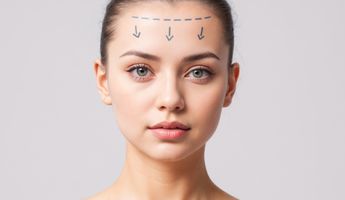
Find the best clinics for Hairline Lowering Surgery in Dominican Republic
No clinics available
Egypt offers the best prices Worldwide
Price: $ 500

- Home
- Dominican Republic
Compare Before & After Photos of _procedure_photos.phpHairline Lowering Surgery
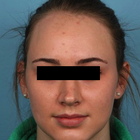
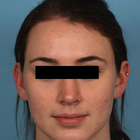
Front view
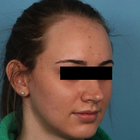
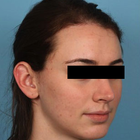
Half-side view

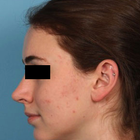
Full-side view

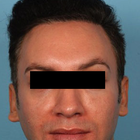
Front view
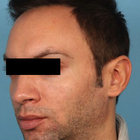
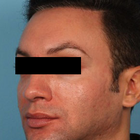
Half-side view


Full-side view
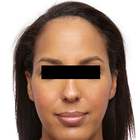

Front view
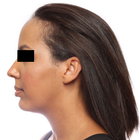

Full-side view
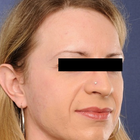
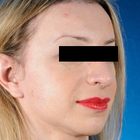
Half-side view
WHY US?
At Medijump, we're making medical easy. You can search, compare, discuss, and book your medical all in one place. We open the door to the best medical providers worldwide, saving you time and energy along the way, and it's all for FREE, no hidden fees, and no price markups guaranteed. So what are you waiting for?

Free

Best Price

Widest Selection

Risk-Free
What you need to know about Hairline Lowering Surgery in Dominican Republic
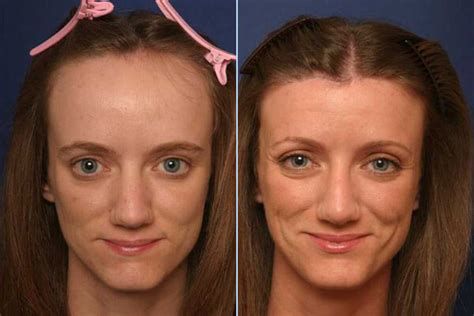
Also known as Forehead Reduction, Forehead Contouring or Scalp Advancement, Hairline Lowering Surgery allows patients to lower their frontal hairline, often lowering it by up to 2 inches. This procedure aims to reduce the distance between the hairline and the eyebrows, creating a more proportionate appearance. It is most commonly done on women with high hairlines, often the result of hair loss.
The procedure usually takes a couple of hours and is performed under general anesthetic. The new hairline is marked on the forehead, the surgeon will cut away this excess skin and the scalp is lowered to the new hairline. Incisions are strategically placed to minimize the visibility of the scar, making it virtually undetectable as it's covered by hair. It's common to combine hair lowering surgery with Facial Feminization Surgery (FFS). Contact a reputable clinic to ensure the best possible results.
What is the cost of Hairline Lowering Surgery in Dominican Republic?
Before choosing a procedure, it is essential to understand the cost of a Hairline Lowering Surgery in Dominican Republic. The cost might vary depending on a number of factors, including the complexity of the procedure, the surgeon's experience and reputation, and the facility. This approximate cost mostly covers the surgeon's fees, anaesthesia, required medical exams, and hospital or operation centre expenses. This is only a broad estimate, so when accounting for other charges, the exact prices might be higher. The ultimate cost may increase as a result of some factors, including consultation fees, outlays for post-operative care such medications, bandages, and follow-up consultations, as well as potential further surgeries to control complications or enhance outcomes.
It's important to keep in mind that Hairline Lowering Surgery is frequently regarded as a cosmetic surgery and may not be covered by conventional health insurance plans. It is best for the patient to speak with their insurance company before the procedure to understand the specific out-of-pocket costs they would have to pay. Some cosmetic surgery practises may provide financing options or payment plans to help patients manage the cost of the procedure.
What does a Hairline Lowering Surgery Procedure Involve?
Hairline lowering suregry is performed under local or general anesthesia. Before the operation begins, the surgeon draws an anticipated post-operative hairline. The surgery is performed according to this and an incision is made along the hairline. The excessive scalp is cut and removed and the rest is stretched to the new hairline. If this is not enough, tissue expanders are used to make it to the new hairline level. Sutures are used to fix the scalp to the bone and incisions are stitched with bandages being applied over the top.
The medical professional ensures that the incision marks are seamlessly concealed within the hairline, thereby reducing any visible traces of the procedure. Once the operation is concluded, the cut is stitched, and a gentle dressing is applied to shield the wound and diminish inflammation. It's important to understand that the intervention may lead to temporary loss of sensation or minor prickling around the area of incision, however, these symptoms tend to dissipate within several months.
How Long Should I Stay in Dominican Republic for a Hairline Lowering Surgery Procedure?
Hairline lowering surgery is an outpatient procedure that takes around 1.5 to 2 hours to complete. After the effects of the sedation subside, you are allowed to leave. Still, you should aim to stay in Dominican Republic for at least 6 days post-op. During this period, you will have a follow-up with the surgeon to check everything is healing as expected and the sutures are removed, usually after 5 to 6 days - this is when you're given the all-clear to travel home.
What's the Recovery Time for Hairline Lowering Surgery Procedures in Dominican Republic?
It will take between 3 to 6 months to allow the regrowth of hair through the scar, which is important as it hides the scar. Recovery time varies from person to person and some people can get back to their normal routine even after 3 days. At least a week is usually required to get back to normal activities and you may find some swelling and bruising over your forehead in the early days. Pain is managed with painkillers and all symptoms subside after a couple of days. A numbing of the forehead is common and normal feeling usually returns after 3 to 5 days.
What sort of Aftercare is Required for Hairline Lowering Surgery Procedures in Dominican Republic?
Aftercare following a Hairline Lowering Surgery is crucial to ensure a smooth recovery and minimization of potential complications. The following are some useful aftercare tips:
- Use icepacks in the initial days to help with inflammation and bruising. Ice is effective in reducing swelling immediately.
- Do not take anti-inflammatory medicines as they increase bleeding tendency.
- Continue taking painkillers prescribed by your doctor.
- Try not to look upwards and avoid frowning as this can be damaging to your stitches.
- Do not lift heavy objects.
- Keep your head a little higher whilst resting.
- Ensure that tight bandages have been applied over the wounds and replace regularly with fresh ones.
- Do not take a bath when the bandages are still intact as a wet bandage can be the cause of infection.
- Avoid strenuous activities such as the gym, running, swimming, etc. for at least 2 weeks after the surgery.
- Do not put hair bands or any other accessory on your head for some time.
- Do not drink or smoke as it will hinder the healing process.
- Ensure you have a diet rich in vitamin C as it makes the healing process faster.
What's the Success Rate of Hairline Lowering Surgery Procedures?
A Hairline Lowering Surgery frequently yields remarkable results, with a significant number of individuals expressing contentment with their post-procedure appearance. Nevertheless, outcomes may differ based on the medical institution or medical professional involved. With the possibility of the scar being visible with certain hairstyles, Hair Transplantation could be applied to further reduce the appearance of any scarring.
Notably, while Hairline Lowering Surgery tends to yield positive results for the majority, it might vary on an individual basis. Factors such as your unique hair growth pattern, scalp flexibility, and the overall state of your hair condition could all influence your final outcome. Therefore, maintaining ongoing communication with your medical professional and adhering to their recommendations both pre and post-treatment is crucial to optimising your results.
Are there Alternatives to Hairline Lowering Surgery Procedures in Dominican Republic?
Surgery is not the only option. Consider these methods before opting for surgical treatment:
- Grafting hair (Hair Transplant): with this technique more hairs are grafted along your hairline instead of lowering it. This is also used for the thickening of your hair. A new layer of hair is grafted below your natural hairline. 1200 to 2400 hair strands are grafted. These hairs fall out after 3 weeks then regrow in 4 months. 10 months is required before you'll see the true longterm result. This is a non-surgical alternative to hairline lowering surgery and it is found to be very effective in reducing the size of your forehead.
- Hairstyling: You can hide a big forehead by styling your hair in such a manner. Of course, this is a non-surgical method. Choose those hairstyles which cover your forehead the most. Some people will use headscarves and hats to also hide their forehead.
What Should You Expect Before and After the Procedure?
A fundamental phase before proceeding with a Hairline Lowering Surgery in Dominican Republic is the preliminary discussion with your medical expert. This interaction involves a comprehensive health evaluation, scrutiny of your medical background, and discussion of any medications you currently use by your expert. They will also perform an exhaustive examination of your scalp and hairline. This evaluation offers the medical professional an opportunity to decide if you're the perfect fit for the process. Moreover, they will deliberate on your anticipation and cosmetic objectives, ensuring they align with the realistic outcomes offered by Hairline Lowering Surgery.
Feeling slight discomfort, swelling, and bruising in the treated part is a normal sensation post a Hairline Lowering Surgery. It is vital to abide by the directives of your medical professional, which may involve keeping your cranium elevated and avoiding rigorous activities to manage these symptoms. For the initial few days succeeding the procedure, rest is essential, providing your body with time to recuperate. Your medical expert might recommend pain-relief therapy for discomfort management. Usually, stitches are taken out approximately one week after the surgery, and by this time, most people can get back to their work and routine activities. Regular follow-up sessions with your medical expert should be expected during the recovery span. These sessions offer your expert a chance to track your recovery progress, manage any prospective obstacles, and provide support during your healing period.
What are the Risks and Side Effects of Hairline Lowering Surgery in Dominican Republic?
While side effects are usually minimal, they are important to think about. After the Hairline Lowering Surgery, you might feel some short-term side effects like swelling, pain, and bruising around the spot where you had the surgery. This is normal during healing and usually goes away in a few days. Numbness or tingling near the cut is also common after a Hairline Lowering Surgery. This happens because small nerves can be affected during the procedure. As your body recovers, these feelings should slowly lessen and finally go away.
Some people might notice hair loss, usually temporary, around the cut. This happens due to the stress on the hair roots during the procedure. However, this kind of hair loss usually doesn't last more than a few months, and new hair will start to grow. More serious risks include infection, heavy bleeding, or bad reactions to the anesthesia. While these problems are rare, they need immediate medical help. To reduce these risks, it's crucial to pick a good surgeon and follow their before and after care instructions.
Whilst the information presented here has been accurately sourced and verified by a medical professional for its accuracy, it is still advised to consult with your doctor before pursuing a medical treatment at one of the listed medical providers
No Time?
Tell us what you're looking for and we'll reachout to the top clinics all at once
Enquire Now

Popular Procedures in Dominican Republic
Prices Start From $136

Prices Start From $4

Prices Start From $126

Recommended Medical Centers in Dominican Republic for procedures similar to Hairline Lowering Surgery

- Interpreter services
- Translation service
- Religious facilities
- Medical records transfer
- Medical travel insurance
- Health insurance coordination
- TV in the room
- Safe in the room
- Phone in the room
- Private rooms for patients available

- Interpreter services
- Translation service
- Religious facilities
- Medical records transfer
- Medical travel insurance
- Health insurance coordination
- TV in the room
- Safe in the room
- Phone in the room
- Private rooms for patients available

- Interpreter services
- Translation service
- Religious facilities
- Medical records transfer
- Medical travel insurance
- Health insurance coordination
- TV in the room
- Safe in the room
- Phone in the room
- Private rooms for patients available

- Interpreter services
- Translation service
- Religious facilities
- Medical records transfer
- Medical travel insurance
- Health insurance coordination
- TV in the room
- Safe in the room
- Phone in the room
- Private rooms for patients available

- Interpreter services
- Translation service
- Religious facilities
- Medical records transfer
- Medical travel insurance
- Health insurance coordination
- TV in the room
- Safe in the room
- Phone in the room
- Private rooms for patients available

- Interpreter services
- Translation service
- Religious facilities
- Medical records transfer
- Medical travel insurance
- Health insurance coordination
- TV in the room
- Safe in the room
- Phone in the room
- Private rooms for patients available

- Interpreter services
- Translation service
- Religious facilities
- Medical records transfer
- Medical travel insurance
- Health insurance coordination
- TV in the room
- Safe in the room
- Phone in the room
- Private rooms for patients available

- Interpreter services
- Translation service
- Religious facilities
- Medical records transfer
- Medical travel insurance
- Health insurance coordination
- TV in the room
- Safe in the room
- Phone in the room
- Private rooms for patients available

- Interpreter services
- Translation service
- Religious facilities
- Medical records transfer
- Medical travel insurance
- Health insurance coordination
- TV in the room
- Safe in the room
- Phone in the room
- Private rooms for patients available

- Interpreter services
- Translation service
- Religious facilities
- Medical records transfer
- Medical travel insurance
- Health insurance coordination
- TV in the room
- Safe in the room
- Phone in the room
- Private rooms for patients available
Hairline Lowering Surgery in and around Dominican Republic
About the Dominican Republic
The Dominican Republic can be found on the island of Hispaniola and is a part of the island group, the Great Antilles. The nation has diverse natural environments and land features. Characterized by rugged mountains on one side and the other side consist of low lying valleys and coastal plains. It is the world’s leading producer of professional baseball players. It is also home to the highest mountain, Pico Duarte, and the largest lake, Lago Enriquillo in the Caribbean Region.
In recent times, the Dominican Republic has become popular with medical tourists. Tourists, particularly from the United States, visit the country for Plastic and Reconstructive surgeries, especially for Breast Augmentation procedure. About 25,000 to 30,000 patients visit the Dominican Republic yearly for various medical treatments. The most sought-after services are general, Plastic and cosmetic surgeries, dental procedures, weight-loss, oncology, and orthopedic treatments.
Most medical service providers are situated around the capital city Santa Domingo and Santiago. The medical establishments offer competitive healthcare services with highly-qualified and internationally-trained surgeons. The following clinics can be found in Santa Domingo: Dr. Rafael E. Estevez - Plastic, Reconstructive, and Aesthetic Surgeon, Dr. Gustavo Almanzar Plastic Surgery Clinic, Alba Reyes Skin, and Hair Transplant Institute and Dr. Ivan Strachan Bariatric Clinic.
Popular Parts of Dominican Republic
The Dominican Republic is an unmatched destination with amazing natural sceneries, intriguing history, and diverse culture. It offers ecotourism adventures in splendid national parks, mountain ranges, beaches, and rivers.
Top attractions of the Dominican Republic:
- Santa Domingo – The capital city is where Christopher Columbus first set foot in the Americas. It is home to century-old buildings, most of which function as restaurants, shops, quaint hotels, and museums. Zona Colonial is the historic central area of Santa Domingo. It is the oldest European settlement and a UNESCO World Heritage Site.
- Punta Cana –Is a premier resort destination, bordering the Caribbean Sea and the Atlantic Ocean. It offers about 20 miles of white sandy beaches. The Bavaro Beach area and Punta Cana together form the Coconut Coast, an area of luxurious resorts. It is famous for water activities such as zip-lining, kayaking, windsurfing, and sailing.
- Samara Province –Is a city overlooking the Samana Bay. Its unique feature is the breeding point for thousands of humpback whales during their mating season in winter.
- Parque Nacional Del Este – Meaning the ‘Eastern National Park’, is one of the largest marine parks in the Caribbean. It also has an offshore coral reef system. Divers can watch a multitude of marine life within its waters. It is also home to hundreds of different species of birds, tropical forests and beaches.
- Lago Enriquillo – The massive hypersaline lake lies 140 feet below the sea level. You will see a large population of American crocodiles as well as pink flamingos, and various other bird species and you will even find iguanas at the entrance of the lake.
- El Limon Waterfalls – Being the tallest falls of the country, it is perfect for hiking and horseback riding through the rugged and steep mountain trail. The hike gives you a stunning view of the Caribbean landscape. The crystal-clear natural pool at its foot is a perfect place to cool off and relax.
- Kite Beach, Cabarete –Is a unique beach, about 20 minutes on foot from the main Cabarete Beach. Kiteboarders fill the otherwise quiet beach in the afternoons when the wind picks up.
Jarabacoa, Sosua, La Romana, Las Aguilas, and Puerto Plata & Playa Dorada are several other popular tourist spots in the Dominican Republic.
Weather and Climate in the Dominican Republic
The Dominican Republic has a tropical weather climate, and constant temperature throughout the year, with average yearly temperature, is around 77°F.
The hottest and humid period is from May to October. The mild winter season is from December to March. The period between November and April are the moderate seasons.
Rainfall is seasonal. The eastern and southern coasts experience rains between April and October. The northern coast receives rains throughout the year due to the influence of the north-eastern trade winds. The southern region is prone to hurricanes, with most striking in the months of August and September.
Getting Around in the Dominican Republic
The Dominican Republic offers easy access to the rest of the world with a myriad of flight options from North America and Europe. The main ports of entry into the country by air are the international airports in Santa Domingo, Punta Cana, and Puerto Plata. Santiago and Samana airports are other points of entry.
There are many flights from major cities of Canada and the US. The most frequent flights are from New York, Miami, Toronto, and Montreal. JetBlue, the budget airlines, operates flights from North America to Santo Domingo, Santiago, and Puerto Plata.
The Dominican Republic has a well-developed inter-country transport infrastructure with a large network of roads. It has many types of public transportation for moving around within cities such as buses, the metro, carro publicos, guaguas, and the motoconchos.
Carro Publicos are small car-public taxis and have a specific route displayed on their roof. Guaguas are privately-owned minivans and pick up travelers from any point and drop them off close to their desired location. Motoconchos are private motorcycle taxis that have reasonable fares and are ideal for short journeys.
Tourist Visas in the Dominican Republic
Citizens of countries such as the UK, USA, and Canada, and Schengen countries are not required to have a tourist visa to enter the Dominican Republic, under a bilateral agreement between the countries. However, they do need to:
- Carry a tourist card (Tourist cards allow you to stay for 30 days and allow an extension to stay beyond 30 days).
- Have a valid passport not expiring before six months with at least one blank page
- Carry proof of onward and return journeys and sufficient funds.
Nationals of countries like India, Sri Lanka, China, and Russia need to get a tourist visa to travel to the Dominican Republic. The visas are multiple-entry type and are valid for 60 days.
Additional Information
- The Dominican Peso (RD$) is the official currency of the country. As of April 2019, one US Dollar is worth about 51 RD$. Major tourist areas like Punta Cana accept US Dollars.
- You can find many ATMs in Santa Domingo and other popular tourist cities. Dominican Republic banks are members of the Maestro, Citrus, and PLUS networks. Hence, you can use the affiliate credit and debit cards here.
- Spanish is the official and major language of the country. Dominican Spanish forms its dialect. Very few locals understand and speak English.
- 93% of the population follow Roman Catholicism. However, many Dominicans do not go to church on a regular basis.
- Major holidays of the Dominican Republic are religious. While others are non-religious and national holidays. Other than Christmas and Good Friday, the Day of Our Lady of Altagracia (January 21), Corpus Christi (June 17) and the Feast of Our Lady of Mercy (September 24) are the religious holidays. Juan Pablo Duarte (January 26), Independence Day (February 27), and Dominican Restoration Day (August 16) are the national holidays specific to the country.
Popular Searches
- Plastic Surgery in Thailand
- Dental Implants in Thailand
- Hair Transplant in Thailand
- Breast Augmentation Thailand
- Gastric Sleeve in Thailand
- Gender Reassignment Surgery in Thailand
- Laser Hair Removal in Bangkok
- Botox in Bangkok
- Dermatology in Bangkok
- Breast Augmentation in Bangkok
- Coolsculpting in Bangkok
- Veneers in Turkey
- Hair Transplant in Turkey
- Rhinoplasty in Turkey
- Stem Cell Therapy in Mexico
- Rhinoplasty in Mexico
- Liposuction in Mexico
- Coolsculpting in Tijuana
- Rhinoplasty in Korea
- Scar Removal in Korea
- Gastric Sleeve in Turkey
- Bone Marrow Transplant in India
- Invisalign in Malaysia
- Plastic Surgery in the Dominican Republic
- Tummy Tuck in the Dominican Republic
- Plastic and Cosmetic Surgery in Poland
- Rhinoplasty in Poland
- Hair Implant in Poland
- Dental Implants in Poland
- IVF in Turkey